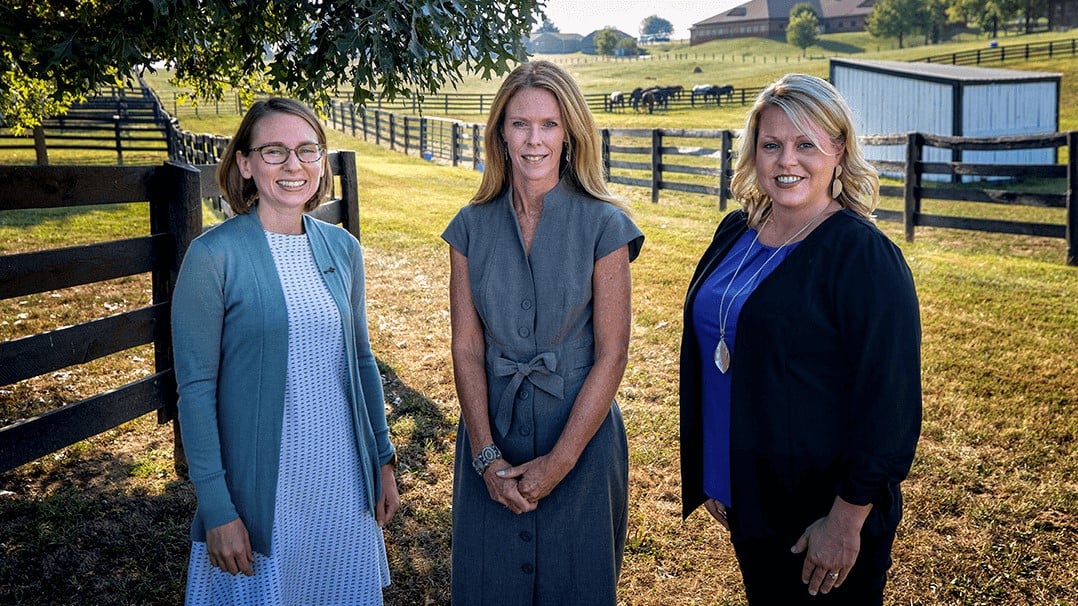For those with opioid use disorder (OUD), the first days after leaving jail are a time of extremely high risk.1 To learn how to better prevent relapse and overdose, researchers are testing ways to connect inmates with community-based treatment and support services for OUD before they are released.
That’s the goal of the Women’s Justice Community Opioid Innovation Network (WJCOIN), a new research project supported by the Helping to End Addiction Long-term® Initiative, or the NIH HEAL Initiative®. WJCOIN is testing a videoconference-based telehealth solution to expand evidence-based practices for treating addiction into the justice system and help respond to the opioid crisis. This telehealth approach is part of the HEAL Initiative’s focus on translating research to practice, seeking to understand what works best for real women in real-world settings.
The project is part of the Justice Community Opioid Innovation Network (JCOIN), which has awarded 12 grants to investigators working in 18 states and Puerto Rico to test strategies to expand effective treatment for people with OUD in partnership with local and state justice systems and community-based treatment providers.
Women’s Justice Community Opioid Innovation Network
“Each JCOIN Clinical Research Center has its own research project, focusing on a different part of the problem of opioid misuse and OUD in the context of the criminal justice system,” explained Michele Staton, Ph.D., associate professor in the University of Kentucky Department of Behavioral Science and a faculty associate of the university’s Center on Drug and Alcohol Research.
Staton is the principal investigator for the WJCOIN project, the only JCOIN site to focus exclusively on women. The study is set in Kentucky and includes three sites in rural Appalachia—the epicenter of the opioid crisis.
Developing a solution for a high-need population
Misuse of prescription drugs and use of illicit opioids often lead to criminal justice consequences. In Kentucky, a 2018 State Police report stated that about 1 in 4 arrests in the state were for opioid-related offenses.2 It is estimated that one half of people in the nation’s jails and prisons have a substance use disorder, but few receive appropriate treatment.3 The number of justice-involved people who need treatment for OUD is a significant public health concern, not only in Kentucky but across the nation.4
“Justice-involved populations are disproportionately affected by opioid use disorder,” wrote Nora Volkow, M.D., NIDA director. “JCOIN will help develop effective intervention and treatment strategies for this crucial setting…to prevent relapse and opioid overdose, which often occurs as they transition back into their communities.”
Women in particular face high barriers to starting treatment and continuing with treatment upon their release from jail or prison.
“Most studies of OUD treatment in the context of justice settings have focused on men because they typically far outnumber women, but women have unique vulnerabilities, such as histories of abuse and trauma, associated with opioid misuse,” Staton explained. “The opioid overdose rate is actually growing faster in recent years among women compared to men.”
Helping women make the transition back home
Staton’s research focuses on finding new ways to help people who have substance use disorders in nontraditional venues, such as jails.
The five-year WJCOIN study aims to enroll 900 incarcerated women with OUD at nine jail sites who are within 30 days of being released. The researchers will test whether using telehealth to link incarcerated women with community treatment providers and trained peer navigators can help them access and remain in treatment once they return to their communities. Peer navigators are women in recovery who work for Voices of Hope, a nonprofit recovery-support group based in the area.
“The peer navigators will assess each woman’s barriers to treatment, identify community resources to overcome those barriers, and help women access those resources,” Staton said. The navigators will also provide other recovery support during the stressful time of community reentry.
The 900 study participants will be sorted into three groups. Two of the groups will receive one of the interventions – videoconference only or videoconference plus peer navigators' services – and the third group, the control, will receive the standard substance use treatment services offered by the Kentucky Department of Corrections. These standard treatment services include participation in a modified therapeutic community and access to medication-based treatment prior to release.
The study team will track the women for a year after release from jail to see how many start medication-based treatment and stay in recovery, and how many return to jail.
Staton also plans to evaluate the roles community and family play in recovery.
“Social networks are very tight-knit in rural communities,” Staton said. “Sometimes these networks can be a path to recovery, but sometimes they lead right back to drug use and criminal activity.”

From left to right: Katherine Marks, Michele Staton, and Sarah Johnson are capitalizing on their long partnership history to design and implement the telehealth project for WJCOIN. Image courtesy of University of Kentucky Public Relations and Marketing.
Collaboration is the key
Staton’s team at the University of Kentucky has a history of strong collaborations with the Kentucky Department of Corrections (DOC) and the Kentucky Department for Behavioral Health, Developmental and Intellectual Disabilities—two partnering organizations with critical roles in the project. This structured collaboration, with active partners from the justice system and the community-based services, is a component of all JCOIN projects.
Sarah G. Johnson, MSW, CSW, is the Director of the Division of Addiction Services for the Kentucky Department of Corrections (DOC), which is helping to facilitate connections between the women in county jails and the University of Kentucky researchers.
“As part of the DOC, we understand the unique challenges of justice-involved people and the operations of the criminal justice system,” Johnson said. “We’re always looking for opportunities to implement best practices in service delivery. The funding that the NIH HEAL Initiative provides will allow us to implement this new telehealth service model and evaluate the outcome.”
As Project Director for the Kentucky Opioid Response Effort within the Department for Behavioral Health, Developmental and Intellectual Disabilities, Katherine Marks, Ph.D., oversees a robust network of behavioral health providers committed to increasing access to medication-based treatment for OUD in Kentucky.
“We have a long history of working with the University of Kentucky and the DOC,” Marks said. “As a result, we have become like the poles of a teepee. All successes are mutually beneficial and depend on each partner’s commitment to the work. We prop each other up and also lean on each other.”
Staton said the partners’ shared commitment to increasing access to OUD treatment is key.
“Their involvement in WJCOIN will be critical, not only at the local level for carrying out this study, but also nationwide, considering their expertise and success in delivering treatment for high-risk individuals in the criminal justice system,” she said.
What would success look like?
Staton pointed out that the telehealth setup only requires a few laptops and webcams. She hopes the project shows the justice and treatment communities that such a cost-effective intervention can be successful.
Johnson is also excited by the potential offered by the telehealth intervention.
“We hope to see a positive effect on treatment engagement for women transitioning back to their communities. If the intervention is effective, the DOC could replicate it across [Kentucky],” said Johnson.
Marks sees another benefit coming out of this NIH HEAL Initiative project.
“This collaboration will strengthen partnerships between jails and treatment providers,” she said. “Once those relationships are established, creative and impactful solutions will arise, even beyond the WJCOIN study.”
Staton hopes that the telehealth intervention and peer support while women are still in jail will encourage them to start and continue medication-based treatment to support their recovery outside of jail.
“We want to remove as many barriers as possible and give women a path to success by finding an effective way to link them to treatment for OUD in their communities,” Staton said.
References
1. Spaulding, A.C. et al. Prisoner Survival Inside and Outside of the Institution: Implications for Health-Care Planning, American Journal of Epidemiology, Volume 173, Issue 5, 1 March 2011, Pages 479–487.
2. Kentucky State Police. Crime in Kentucky. Frankfort, KY: Kentucky State Police; 2018:4.
3. National Academies of Sciences, Engineering, and Medicine. Medications for Opioid Use Disorder Save Lives. Washington, DC: The National Academies Press; 2019:98.
4. Kentucky State Police. Crime in Kentucky. Frankfort, KY: Kentucky State Police; 2018:24.

Read About This Project on NIH RePORT
Learn more about Staton’s project, “Kentucky Women’s Justice Community Opioid Innovation Network (WJCOIN).”

Find More Projects in This Research Focus Area
Explore research programs and funded projects within the Translation of Research to Practice for the Treatment of Opioid Addiction focus area.

National Institute on Drug Abuse (NIDA)
Learn more about NIDA’s role in the NIH HEAL Initiative.
 U.S. Department of Health & Human Services
U.S. Department of Health & Human Services
